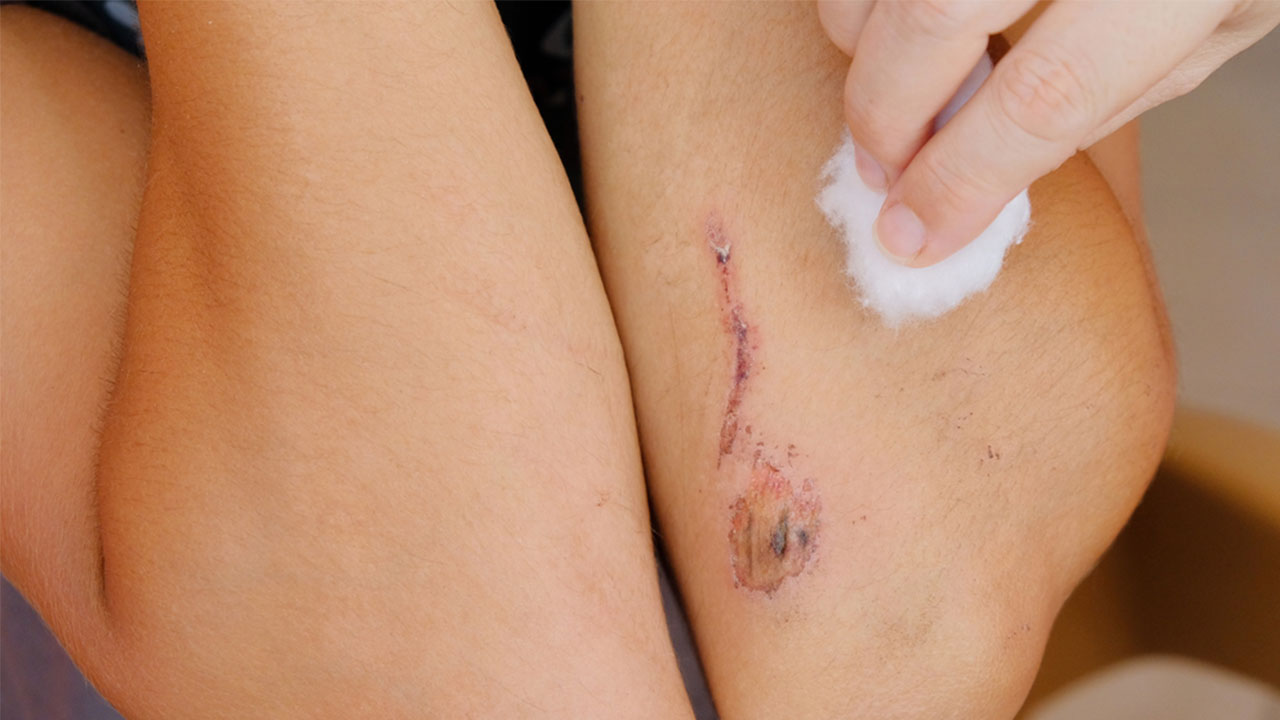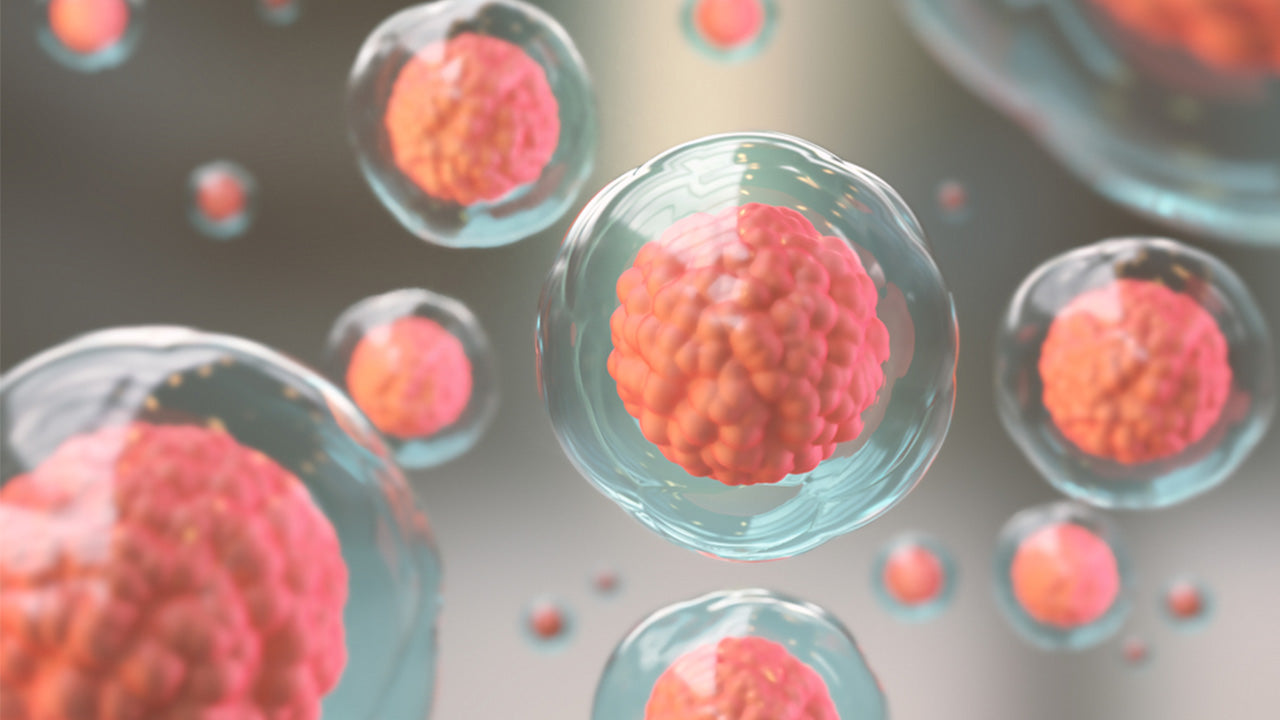The 4 Stages of Wound Healing: How Amino Acids Can Accelerate Wound Repair
 By: by Amino Science
By: by Amino Science

As a research scientist, I’ve conducted many studies on wound healing and nutritional and metabolic support following serious illness and/or injury. Throughout my 40-year career, amino acid nutrition has emerged as a major nutritive aid for the four stages of wound healing.
These four distinct stages involve a complex series of reactions often referred to as the phases of wound healing. But that implies a sequence of events. While some processes do indeed precede others, some also occur simultaneously.
Let’s take a look at what happens when you get a wound so that we can better understand how proper nutrition and essential amino acid support can accelerate the healing process.
The 4 Stages of Wound Healing
Stage 1: Hemostasis Phase
The first thing your body needs to do when it gets a wound is to stop the bleeding. During the process of hemostasis, blood vessels narrow in order to reduce blood flow, and platelets begin to clump together in order to patch up the tear in the blood vessel wall.
Next, the blood starts to clot as a way of “plugging up” the wound, and an enzyme called thrombin activates the formation of a fibrin mesh (composed of a type of insoluble protein) that covers the platelet plug and helps form a stable clot.
Once blood loss is under control, inflammatory cells migrate to the site of the wound to begin the inflammatory phase of wound healing.
Stage 2: Inflammatory Phase
Inflammation plays a key role in initiating the process of healing. During this second phase, inflammation helps to regulate bleeding and protect against infection by removing debris, bacteria, and pathogens from the wound site.
Inflammatory agents—white blood cells, nutrients, enzymes, and growth factors—create the redness, swelling, and pain typically associated with the inflammatory phase, which, under normal conditions, lasts between 4 and 6 days.
While inflammation is an essential part of the healing process, sustained inflammation is counterproductive and actually slows healing.

Stage 3: Proliferative Phase
During this tissue growth phase, the wound is filled and covered using new tissue made of collagen (the protein that gives skin its strength and structure) and an extracellular matrix formed from connective tissue cells called fibroblasts. The wound edges (referred to as wound margins) contract and pull toward the center of the wound as new blood vessels and tissues are formed.
During the initial stage of this process, the new tissue that is formed is known as granulation tissue. Healthy granulation tissue can be recognized by its pink or red color and somewhat shiny appearance.
Cells called epithelial cells then move from the wound margins and travel across the wound bed, covering the new tissue. This process can last from as few as 4 days to as many as 24. The collagen that is created during this phase, however, is disordered and thick.
Stage 4: Maturation Phase
Starting at around day 21 of the healing process, the maturation phase—or remodeling phase, as it’s sometimes called—restructures the collagen from type III (the main component of reticular fibers, which act as a supportive mesh) to type I (the most common type of collagen in the body and a major structural component of the skin) so that the collagen lines up with the wound’s tension lines.
As tissue repair continues, collagen creeps ever closer together and cross-links (a process that reduces the thickness of the scar tissue and strengthens the skin growing over the wound). This phase can last more than a year, but healed wounds tend never to regain 100% of their tensile strength (the ability to resist tension and not break).
If one or more of these phases is disrupted or incomplete, successful wound closure can’t occur. A range of factors—from advancing age to inadequate nutrition—can impair the wound healing process. And failure to complete all four stages of wound healing successfully can cause a pathologic inflammatory response and chronic, non-healing wounds.
Factors That Slow Wound Healing
Wound healing isn’t cut and dried. In fact, there are many physiologic factors that can slow this complex process. For example, according to a scientific article published in the Journal of Dental Research, the rate of wound healing can be slowed by:
- Infection
- Aging
- Medications
- Poor overall health
- Inadequate nutrition
- Insufficient tissue oxygenation
- Age and sex hormones
- Diabetes
- Stress
- Obesity
- Alcoholism
- Smoking
Let’s discuss a few of these factors in more detail.
Infection and Chronic Inflammation
Inflammation is crucial during wound healing because it clears the wound of bacteria and toxins that can cause infection. If all contaminants are not cleared from the wound site, then pro-inflammatory molecules remain elevated indefinitely, the immune system becomes compromised, and the wound becomes vulnerable to infection.
Advancing Age
Between 3 and 6 million people in the United States suffer from chronic wounds. And 85% of them are aged 65 or older. Advancing age is a primary risk factor for impaired wound healing because age-related characteristics affect every phase of wound healing and can delay the entire process.
Interestingly, exercise has demonstrated a protective effect on wound healing in the aging population, as it helps reduce levels of pro-inflammatory molecules in wound tissue.
Medications
Certain medications, such as glucocorticoids (a class of steroids), non-steroidal anti-inflammatory drugs (NSAIDs), and chemotherapeutic drugs, can interfere with platelet function and clot formation and exert undesirable anti-inflammatory effects during wound healing.
Inadequate Protein/Amino Acid Intake
During wound healing, the body needs an increased supply of protein to keep up with the demands of collagen formation. However, if you’re not supplying your body with the increased protein intake it needs during this process, collagen synthesis suffers, wound tissue isn’t as strong, and the wound is more vulnerable to infection.
With regard to nutritional status, inadequate nitrogen intake in the form of amino acids or dietary protein also impairs wound healing. For this reason, adequate amino acid nutrition is crucial during this process.
Diabetes
If a person is insulin resistant, meaning they have a decreased sensitivity to insulin, wound healing will be impaired. Such is the case for people with diabetes, a chronic disease marked by insulin resistance. Older people may also fall prey to insulin resistance and impaired wound healing.
My research team and I discovered that a local insulin-zinc injection can accelerate the wound healing process. (You can read about the study here.) However, without extra amino acids, an increase in insulin has only a modest effect on the net gain of protein in the wound. Insulin helps prime the cells’ response to extra dietary amino acids by increasing the rate of protein synthesis.
The stimulatory effect of the combination of increases in amino acids and insulin stimulates wound healing more than the sum of the individual effects of each treatment. In other words, supportive amino acid nutrition can work with insulin to help build protein and accelerate wound repair.
Amino Acids and Wound Repair
How fast a wound heals depends on how fast proteins can be built. The synthesis of all the proteins in new cells is important, but the most crucial component of wound repair is the synthesis of collagen.
Collagen is the primary protein component of the connective tissue that rebuilds the wound. It’s a somewhat unique protein as well, as it’s composed of approximately 90% nonessential amino acids.
Nonessential amino acids are produced by the body, and you’d not expect them to affect how quickly a protein can be produced. Thus, it’s not surprising that increasing the amount of amino acids you take—as a supplement or by eating more dietary protein—has little effect on how quickly normal skin makes protein.
Although protein synthesis in normal skin does not respond to variations in dietary amino acid intake, increased amino acid intake does stimulate protein synthesis in wounded skin. Specifically, the essential amino acids (those amino acids not produced by the body) have been shown to stimulate collagen production and speed wound repair.
How do essential amino acids help jump-start collagen production in wounds?
Because collagen is composed of less than 10% essential amino acids, there are most likely enough available to stimulate collagen protein building (that’s why collagen synthesis in normal skin isn’t responsive to increased intake of dietary amino acids).
So, it’s not an availability issue. Rather, essential amino acids help regulate the inflammatory process—and not just during stage 2 of wound healing, but throughout all phases.
Essential amino acids decrease the number of inflammatory cells that are activated during the entire process of wound healing. By decreasing these pro-inflammatory cells, the body can make more fibroblasts—the cells that produce collagen during the proliferative stage of wound healing. The result is the faster formation of a dense network of collagen fibers, which produces a stronger wound.
Taking a properly balanced essential amino acid blend optimized for targeted wound healing support can help protect against an overactive immune response and increase the amount and quality of new collagen, for faster and more durable wound healing. We recommend Heal. Find out more here.

Up to 25% off Amino
Shop NowTAGS: injury
Join the Community
Comments (0)
Most Craveable Recipes




 833-264-6620
833-264-6620



















